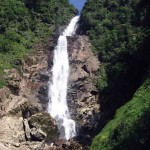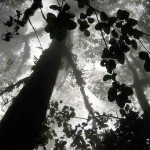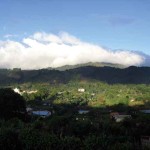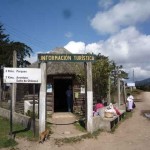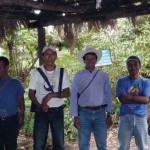Chilascó’s Hidden Treasure, Guatemala
text and photos by Anthony Brindisi
At 133 meters, the majestic Salto de Chilascó is Central America’s tallest waterfall
Guatemala is a country brimming with cultural diversity and natural beauty. It is proudly referred to as “The Soul of the Earth,” and every year between one and two million tourists flock to this multicultural, remarkably topographic, fascinatingly biodiverse land to experience its magic and wonder. Tourism is one of the country’s largest and fastest-growing industries with awe-inspiring attractions such as Lake Atitlán, the Mayan ruins of Tikal and the flowing lava of Volcán Pacaya. However, while these international attractions receive most of the attention, new opportunities have also arisen throughout the Guatemalan countryside for smaller, eco-friendly, community-tourism destinations. For those adventurers who like to travel off the beaten path, the village of Chilascó is host to one of these hidden touristic treasures.
An aldea of Salamá, Baja Verapaz, Chilascó can be found neatly tucked inside the picturesque rolling hills of Central America’s largest cloud forest, La Biosfera de Sierra de Las Minas. Within the biosphere you can find a cornucopia of flora and fauna, 70 percent of Guatemala’s biodiversity, and the national bird, the quetzal. But a special attraction is the majestic Salto de Chilascó, Central America’s tallest waterfall. For generations the families here have survived off fertile soil, an irriguous climate and good, old-fashioned work ethic. But recently, empowered by the surge of tourism in Guatemala, they have begun to use the pristine natural beauty of their surroundings to help in their struggle with poverty. This community may be small, but their hearts and dreams are anything but, and in 2005 the citizens formally formed The Association for the Sustainable Development of Chilascó (ADESOCHI).
ADESOCHI is a grassroots community organization that was founded on the principles of ecotourism. The association has three goals: conservation, education and income generation. The idea is to create new sources of income for the community, while protecting natural resources and fostering respect for the environment through education. ADESOCHI is constantly working to provide the citizens of Chilascó with opportunities to improve their standard of living. They hire and train local youths as guides, help local artisans sell their products, and put unemployed men to work performing trail maintenance. This dedicated group of elected community leaders, led by President Clementino García Pérez, shines as an example for similar projects throughout the region.
As you pull into Chilascó the first thing you will see is a thatched-roof hut that serves as the Tourist Information Center. Here you will be greeted by an enthusiastic member of ADESOCHI and receive a detailed explanation of the all the products and services that the community has to offer. The main attraction is a scenic hike that leads to the base of Central America’s tallest waterfall (entrance: Q35/us$4). To reach El Salto de Chilascó it is a three-kilometer hike through the cloud forest. A popular and highly advisable option is to hire a professionally trained local guide. He or she will point out the many endemic species of flora and fauna, help you spot some of the over 200 different types of birds that inhabit the area and share interesting stories from the community.
The first two kilometers of the trail are passable on horseback, and the local boys are always excited to provide this service. After this you will reach a rest area known as La Cumbrita, which marks the end of the biosphere’s buffer zone and the beginning of the core zone, a denser area of the forest that remains unadulterated by human influence. The transition from one zone to the next is strikingly evident as the path narrows and you suddenly find yourself surrounded by jungle. The final kilometer is all downhill as you make your descent toward the base of the waterfall. On the way down, as you enjoy the refreshingly pure mountain air that holds the unmistakable scent of pine, your guide will first lead you to El Saltito. This smaller of the two waterfalls offers a great opportunity to take a dip in the water and cool down. After this you will pass the campground, where you can pitch your tent as the peaceful sound of the waterfall serenades you in the background.
Continuing from the campground you will pass two miradores that present stunning views and excellent photo-ops. Then, suddenly, the path opens up into a grand valley, a beautiful oasis, where towering overhead is a cascading waterfall that stands at an impressive 133 meters tall. The final mirador is a great place to relax and enjoy the cool spray of the mist. The more adventurous can actually climb the rocks right up to the base of the waterfall. Breathe the fresh air, listen to the water as it splashes on the rocks, watch the birds soaring overhead, feel the tranquility of the environment, and soak up the memory of what is truly one of Guatemala’s greatest natural wonders. Then head back to town for a typical Guatemalan meal prepared by Doña Petrona at the local comedor.
Before leaving don’t forget to check out the handmade products of the local artisans. The women of Chilascó make a wide variety of high-quality baskets, hats, vases and more out of pine needles and other plants from the region. They are currently working on a line of Christmas tree ornaments that will be available in Casa de los Gigantes in Antigua.
Getting to Chilascó is easy. From Guatemala City, follow the CA-14, known as the road to Cobán, to kilometer 142 where you will see a large sign for the turn-off to your right. From the thruway it is a 12-kilometer drive on a well-maintained dirt road that winds its way through the mountain range. Those traveling by bus should head to the Monja Blanca station in the capital. Take that to the Chilascó junction, and from there you will find microbus transportation to the Tourist Information Center. It’s about a three-hour trip from Guatemala City. Come visit!
